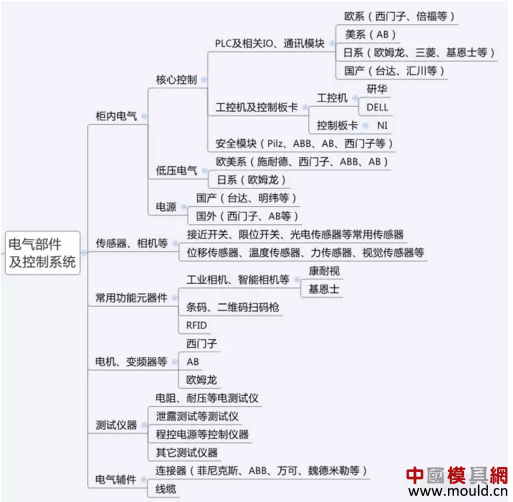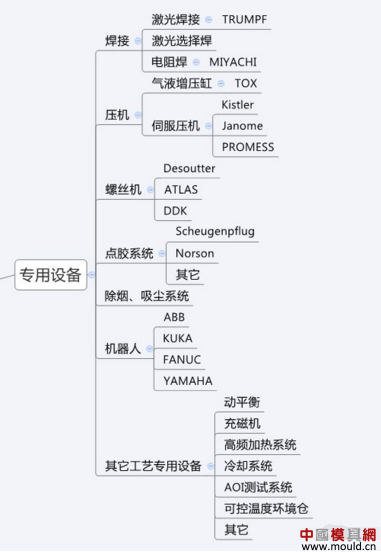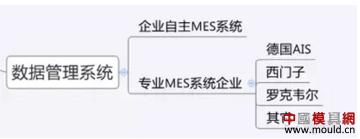Take you to understand the "non-standard automation" for the auto parts industry, let us take a look at the "non-standard" point of the "mechanical network."
First, the characteristics of non-standard design
1. Diversity and uncertainty.
For non-standard automation design, accomplish the same task, there are many different ways to achieve. From the customer's point of view, different customers consider different priorities, and there is a big difference in demand. A customer thinks that a good solution does not necessarily meet the needs of B customers. Some customers value the main performance of the equipment, and some customers pay more attention to the price. In addition, from a design point of view, the basic originality of non-standard design is relatively small, mainly based on the principle of mature structure, just like building blocks through different combinations of structures to achieve the desired function, and the final design The merits and demerits depend on the experience of the building block designer.
2. Customization.
Non-standard equipment is a prior demand, followed by a product. This is the biggest difference with standard equipment and other standard parts. The standard equipment is that the equipment supplier designs and produces the equipment according to the market demand. The function and performance of the equipment have been determined. Non-standard equipment is based on user requirements to provide personalized equipment products and services.
3. Short development cycle.
For non-standard equipment users, the delivery time given will be very short once the demand is put forward. Short 1-2 months, long 6-24 months. The development cycle of non-standard automation equipment for general auto parts is 4-6 months for small projects and 5-12 months for large projects.
4. The price difference is large.
The prices of different schemes are quite different. Using different spare parts and third-party equipment will also affect the prices of equipment. The solution adopted depends largely on the customer's focus and comprehensive assessment. It also depends on the designer's comprehensive assessment of the project's technical implementation and risks.
5. The competition is very intense
There are tens of thousands of domestic automation equipment companies. Due to the low barriers to entry and the non-standard automation companies, the competition in this industry can be described as “a single force with multiple horsesâ€. In this Red Sea, which has won the "broken blood", the entire industry currently does not have a leading company to regulate the order of the industry. The competition between enterprises and enterprises is becoming increasingly severe. There are mainly the following ways:
1) The competition of channels and customer resources: the customer relationship is the fight, and the sales channel talent is the rush;
2) Price competition: competing bids, lower prices each other, and low-price winners;
3) The competition of technical talents: competing to dig people and win high value (this also causes some chaos in the industry);
4) Competition on the scale of the enterprise: Through the continuous expansion of the scale of the company, for some of the larger projects, the opponent will be crushed to death by the effect of scale.
6. The risk is high.
Compared to standard equipment, the risk of non-standard equipment development is high. On the one hand depends on the technical strength of the equipment provider, on the other hand depends on the assessment of the demand. The more adequate the assessment, the smaller the risk, and vice versa. On the other hand, especially for the auto parts industry, the investment cost of the project is relatively high. One non-standard automated production line is frequently tens of millions or even hundreds of millions. If it fails, the loss is very large. Therefore, both supply and demand parties must have sufficient knowledge of the project's technical feasibility and project risks.
Second, the composition of non-standard automation equipment (auto parts industry)
According to Mavericks' understanding, taking auto parts industry as an example, non-standard automatic equipment mainly consists of mechanical parts, electrical parts and control systems, third-party special equipment, and data management systems, as shown in the figure below. If a production line is likened to a human body system, the mechanical parts are like the bones, muscles, and trunk of the human body, which constitute the entire main structure and are responsible for the execution of instructions; the electrical components and control systems are like the human brain, neural networks, responsible for decision making and The issuance of directives; special equipment is like the liver, colon, stomach and other functional organs in the human body, responsible for the implementation of local special functions; and data management systems are more like people's information data storage and communication systems.
1. Mechanical parts
As shown in the figure below, the mechanical parts consist mainly of machined parts and purchased standard parts.

1) Machined parts
Most of the machined parts are parts designed by a mechanical engineer and manufactured through various machining processes. There is also a standard machining part selected by the MISIMI platform or the Elekta platform. General companies are recommending the use of standard parts for the preferred platform, which reduces errors and reduces equipment maintenance costs.
2) standard parts
Standard parts, as the name implies, are parts that can be purchased directly from the market. There are pneumatic components such as pneumatic valves, pneumatic switches, air cylinders or clamping jaws provided by FESTO or SMC brands; there are transmission parts such as electric cylinders, motors, screws, guide rails, etc.; there are movement modules such as Conveyor conveyor system, indexing Turntable, etc.; there are other supporting accessories, such as bearings, bushings and so on.
2. Electrical parts and control system
As shown in the figure below, the electrical components mainly consist of the following components. General auto parts industry customers have requirements for brands: if the customer is a European brand, it will generally require the use of the European PLC and related major components; if it is a Japanese brand (such as Japan DENSO), it will generally require the use of Japanese PLC and related major components. Of course, customers will also request non-standard suppliers to select the main electrical components of the corresponding brand according to the mainstream brands originally used by the factory.

3. Third-party special equipment
The third-party equipment is like a functional organ in a non-standard production line. The third-party equipment used in each non-standard project is very different, depending on the technological decisions needed to produce the parts in the production line. For example, if welding is involved, it is necessary to select the corresponding welding equipment, and the welding is divided into general laser welding, selective welding, resistance welding, etc. There are also metal welding and plastic welding, so it cannot be generalized. The realization of most of the functions of non-standard items depends on the use of the mechanism and third-party equipment.
In the auto parts industry, commonly used third-party non-standard equipment is shown below.

4. Data Management System
For example, MES systems or simple traceability systems can be called data management systems, but not every non-standard automation project has a data management system. With the improvement of production quality and efficiency requirements, more and more customers are demanding the non-standard automation equipment ordered to have such a system, and the auto parts industry is naturally also a very popular industry. Some non-standard automation equipment suppliers have their own MES systems, and most non-standard automation equipment suppliers use third-party developed MES systems.

The above describes the main components of non-standard automation equipment, which shows that the non-standard automation industry covers a wide range. It is precisely because the non-standard automation industry is in the role of “system integrator†in the manufacturing industry. Therefore, non-standard automation may be the industry with the most extensive coverage and levels in various fields of the manufacturing industry.
There are various parts suppliers in the manufacturing industry, from low-voltage electrical appliances, controls, mechanical components, motors, transmission components to various third-party equipment; downstream there are various component manufacturers for the automotive parts industry. In terms of this, there are leading companies such as BOSCH, DENSO, MAGNA, and HILITE.
Third, understand your customers
1. Understand customer needs
1) The importance of customer needs
Meeting the needs of customers is the goal of all companies providing products or services. For the "customized" features of the non-standard automation industry, it is necessary to provide "customized" solutions for each customer. Only by truly understanding the needs of customers can we truly create equipment that customers are satisfied with.
As the so-called remedy, all projects are based on customer needs rather than the engineer's personal experience. However, some engineers did not fully understand the needs of customers when conducting project design, but designed them based on their own experience. After such equipment design and production are completed, when they look back at customer technical requirements, they find that they have deviated from customers. The demand is far away. In addition, in the initial understanding of customer needs, the more detailed the better, this can reduce the repeated modification of the program, otherwise it will not only waste time, but also affect the morale of engineers. The so-called "sudden anger, and then decline, three exhausted."
1) General contents of customer requirements (example)
Equipment functional requirements: operational requirements, productivity requirements, yield requirements, equipment capacity requirements, etc.
Project Progress Requirements: Whether the timing of development and design stages can meet the customer's production requirements;
General requirements: control requirements, wiring requirements, ease of operation, appearance requirements, space requirements;
Maintenance requirements: safety, maintenance, spare parts procurement, technical support;
Brand and other requirements: Selection of standard parts (brand requirements) and other requirements (such as CE certification, etc.).
3) Classification of Customer Requirements (Examples)
In fact, I think that the vast majority of customer demand for products can be divided into explicit demand and implicit demand.
Explicit demand: The customer's explicit requirements are collectively referred to as explicit requirements. These requirements are generally made through technical agreements. Including the equipment acceptance related index parameters, these are undoubtedly the most important and must be satisfied.
Implicit demand: The requirement that a customer does not explicitly propose but meets according to the general specification of the equipment or the industry specification is called implicit demand. Including safety (operational safety, foolproof, interlocking devices), dust explosion-proof, anti-static, appearance shape and color, material use, noise, use of the environment, ergonomics and so on. In response to this demand, most of the non-standard equipment suppliers in China are often not well-executed because they have been engaged in low-end manufacturing. Many of the requirements are often overlooked, or the supplier has no relevant concepts at all. . The understanding of hidden needs requires not only the experience of non-standard design, but also a certain understanding of the relevant industry's manufacturing specifications and standards.
2. What type of customer do you belong to?
The so-called "knowing yourself and knowing each other, fighting every battle", to do a good project, it must understand your customers. According to Mavericks' experience, especially for the auto parts industry, I think there are three main categories: dependency, dominant and multivariate.
1) Dependent
Dependent customers themselves lack the technical strength of their equipment and no specialized automation department. Such companies put forward a relatively rough demand, generally only to propose the functions to be realized, and other requirements are not specific. Reliance on equipment providers is high, only focusing on the final results, there is not much assertiveness during the program phase. This kind of customer cooperates more positively, what information you want, he provides according to your request, but more disorderly, must the design engineer combs for oneself. The needs of such customers require equipment providers to have a good experience and carefully sort out the various requirements. In addition, some customers are dependent customers in terms of their technical strength, but they often interfere with the design of the project and make some unprofessional suggestions, which leads to the project becoming “four unlike†and it is easy to cause the project to fail. Suppliers and customers push each other. This type of project is very dangerous and should be avoided as much as possible.
2) Leading type
The customer itself has relatively solid technical experience. It understands all aspects of the mechanical process and electrical control involved in the project. It also tests some risky processes in advance and even has preliminary equipment before the requirements are put forward. Program or renovation experience. Such customers have more specific and comprehensive requirements for equipment, and even have specific requirements for the specific details of the equipment. If the technical level of such customers is indeed high, especially when the supplier lacks relevant experience, the risk of the project will be much smaller. There are also some customers who think that the technology is already very solid, full of confidence, and will impose their own ideas on the equipment provider. Although such customers are more assertive, equipment suppliers must also fully understand customer needs and make their own analysis and judgment.
3) Variant
When this type of customer first contacts, they have a certain understanding of the demand, but how to implement it is more ambiguous. With constant contact with equipment suppliers, only gradually formed their own views. Such customers are more and more repetitive, their needs are not raised once, but as the depth of understanding continues to increase new requirements. Such customers often turn different suppliers' plans or structures into their own requirements to require other suppliers. This kind of customer is almost the most difficult customer for non-standard automation equipment. However, regardless of the type of customer, the supplier should fully understand the customer's needs, so as not to go astray.
In summary, while the needs of non-standard automation customers are ever-changing, design requirements are also changing. The customer's needs are a hard nut to crack, and customers need to rack their brains to deal with it. However, if we have enough accumulated technical experience, have the appropriate standard technical specifications, have a full understanding of the needs of our customers, and add a team that dares to fight, I believe that regardless of what the customer comes from, the so-called “Bing will stop the water "To come to cover the earth" we only need to carry out project design according to technical requirements and norms, so as to remain unchanged, all projects will be just "a piece of cake."
Fourth, do yourself - to change without change (Introduction)
In the above section, we have already understood the technical composition of non-standard automation and understood the needs of customers and customers. Then what we need to discuss next is how to do a project. Due to limited energy, here only as a primer, as the theme of the next share, there will be time to find time and then finishing sharing.
Thank you for your company!
12 Volt Hydraulic Power Unit,Power Unit For Dock Leveler,Mini Power Pack For Dock Leveler,Dock Leveler Mini Power Pack
GRH , https://www.grhcn.net